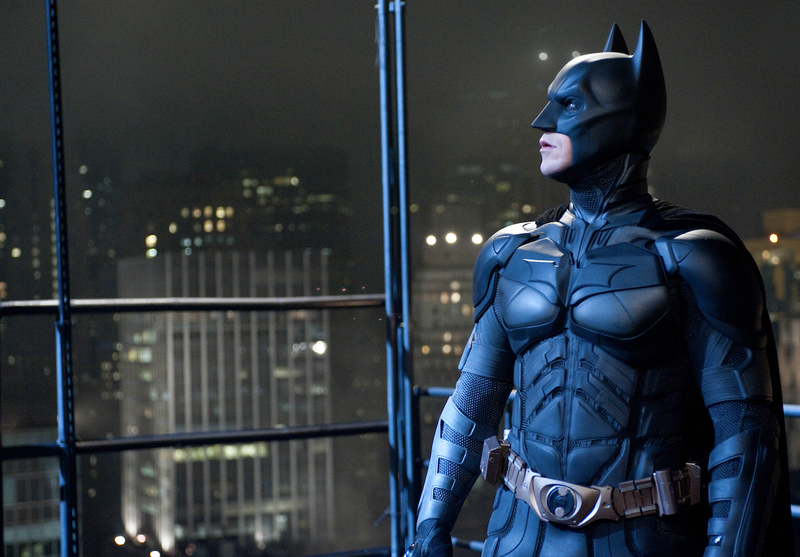Holy milestones, Batman! Detective Comics, where the caped crusader debuted on March 30, 1939, reached issue No. 1,000 Wednesday, just days before the hero's 80th birthday. "It is evidence of the greatness and power of the Batman concept that the character has appeared continuously over eight decades," Peter Sanderson, a comic book historian, said.
One of the great leaps forward was Frank Miller's The Dark Knight Returns, a four-part story which presented an older version of the hero coming out of retirement to protect Gotham City once more. It helped pave the way for Tim Burton's Batman, starring Michael Keaton.
Here are key Batman moments in Detective Comics:
• March 1939, Detective Comics No. 27. Detective Comics was an anthology series that began in 1937. It gave DC Comics its name. The Bat-Man, as he was then called, premiered in this issue's six-page The Case of the Chemical Syndicate. (The later cover date -- May, in this instance -- was a practice publishers used to keep comics on newsstands longer.) The story introduces Commissioner Gordon, Bruce Wayne and his caped alter-ego, who thinks nothing of heaving a criminal off a roof. Batman was created by artist Bob Kane and writer Bill Finger, though it took many years for Finger to receive credit for his contributions. A copy of Detective No. 27 sold at auction for $1.075 million in 2010.
• March 1940. Detective Comics No. 38. The world of Batman brightened with the introduction of Robin, the Boy Wonder. "Robin humanizes Batman and also allows for some levity in the heavy-shadowed stories of Gotham, while of course hooking young readers with someone they can also relate to," said Peter J. Tomasi, who writes the current Detective Comics series.
• December 1949, Detective Comics No. 156. Michael E. Uslan, a producer of the Batman films, called this issue transformative. "The Batmobile of 1950," he said, "redefines Batman, modernizes him, and moves him into a new generation, equipped with higher tech."
• March 1964, Detective Comics No. 327. "This issue introduces the legendary 'New Look' Batman, with the yellow circle around his chest symbol and a whole new look and style both visually and in terms of character development and story," Uslan said.
• November 1966, Detective Comics No. 359. When producers of the Batman TV series wanted to increase female viewership, they asked DC for a new character. They got Batgirl, whose civilian guise is Barbara Gordon, the daughter of the police commissioner. Batgirl's career was halted in 1988, when she was paralyzed after being shot by the Joker. She became Oracle, a hacker and information broker aiding DC's heroes. In 2011, she underwent experimental surgery that returned her to the rooftops.
• November 1973, Detective Comics No. 439. Batman has no dialogue in Night of the Stalker, which is gimmicky but works, if you believe the hero's laser-sharp focus leaves little room for words. The story -- written by Steve Englehart, plotted and drawn by Vin and Sal Amendola and inked by Dick Giordano -- begins with our hero seeing bank robbers murder a couple in front of their son. After justice is served, Batman unmasks at home. Suddenly "sorrow explodes within him" as he remembers being a boy and witnessing the death of his parents.
• December 1975, Detective Comics 457. Another side of Batman emerges in There Is No Hope in Crime Alley, by Denny O'Neil and Dick Giordano. Batman makes a pilgrimage to the street where his parents died, seeking out Leslie Thompkins, who consoled a young Bruce Wayne that fateful night. That encounter inspired Leslie to devote herself to charitable work. In a rarity for Batman, he thanks her and kisses her brow tenderly.
• December 1980, Detective Comics No. 500. Paul Levitz, whose long career with DC began in 1972, said that assembling the all-star creators for this milestone issue was his proudest editorial moment. The 80 pages include a piece by Walter Gibson, the creator of the Shadow, in a tribute to the earliest days of Detective, which included text stories.
• June 2009, Detective Comics No. 854. Batwoman was introduced in Detective No. 233 in 1956, in part to give Batman a love interest. It did not take. She was rebooted in 2006 as a lesbian who had been discharged from the military. This Batwoman was embraced by fans, and she took over Detective for a year before graduating to her own series.
• March 2019, Detective Comics No. 1,000. This 96-page issue has several stories by a boldface slate of creators. The first, "Batman's Longest Case," by Scott Snyder and Greg Capullo, recalls his first adventure. It also introduces the Detective Guild, some of whose members had extensive solo stories in Detective, including Slam Bradley (12 years), Martian Manhunter (nine years) and Elongated Man (five years).
Style on 03/31/2019
